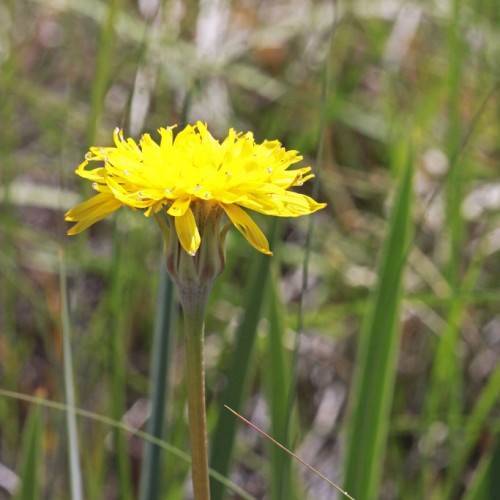
Pale False Dandelion
Agoseris glauca var. glauca
Also Known As - Pale Goat Chicory,Pale Agoseris,Glaucous False DandelionWatering:
Frequent
Hardiness Zone:
Sun:
full sun,part shade
Leaf:
Yes
Growth Rate:
Low
Salt Tolerant:
Yes
Care Level:
Medium
watering
For Orange Agoseris (Agoseris aurantiaca) plants, watering should be done every 7 to 10 days during the summmer months, dependent on conditions. For the fall and spring seasons, water only every 14 days, or when the soil feels dry to the touch 1 inch below the surface. During the winter months, water the plant once a month, but adjust to the local conditions. When watering, apply enough water so that it soaks about 1-2 inches deep into the soil. Be careful not to overwater, as this can lead to root rot.
sunlight
Orange Agoseris (Agoseris aurantiaca) is a perennial flower native to the western and mid-western United States and Canada. It enjoys full sun during the warmer months, especially in the summer, and partial shade during the rest of the year. To achieve the best blooms it should be placed in a spot that receives full sun from late morning to mid-afternoon, but not so much that it will be in the direct, blazing sunlight all day. Eight to 10 hours of sunlight is ideal throughout the growing season.
pruning
Orange Agoseris is a low- to moderate-growing perennial that can reach up to 18 inches in height. Pruning should be done in late winter or early spring before new growth begins. It is best to remove dead, diseased, and damaged branches, as well as any crossing or overcrowded branches. When pruning, try to keep an even shape by removing any new shoots that have grown too large. If a more compact and fuller look is desired, then pruning can be done after flowering in summer or early fall. Be sure to use clean and sharp tools, and only remove healthy stems.
